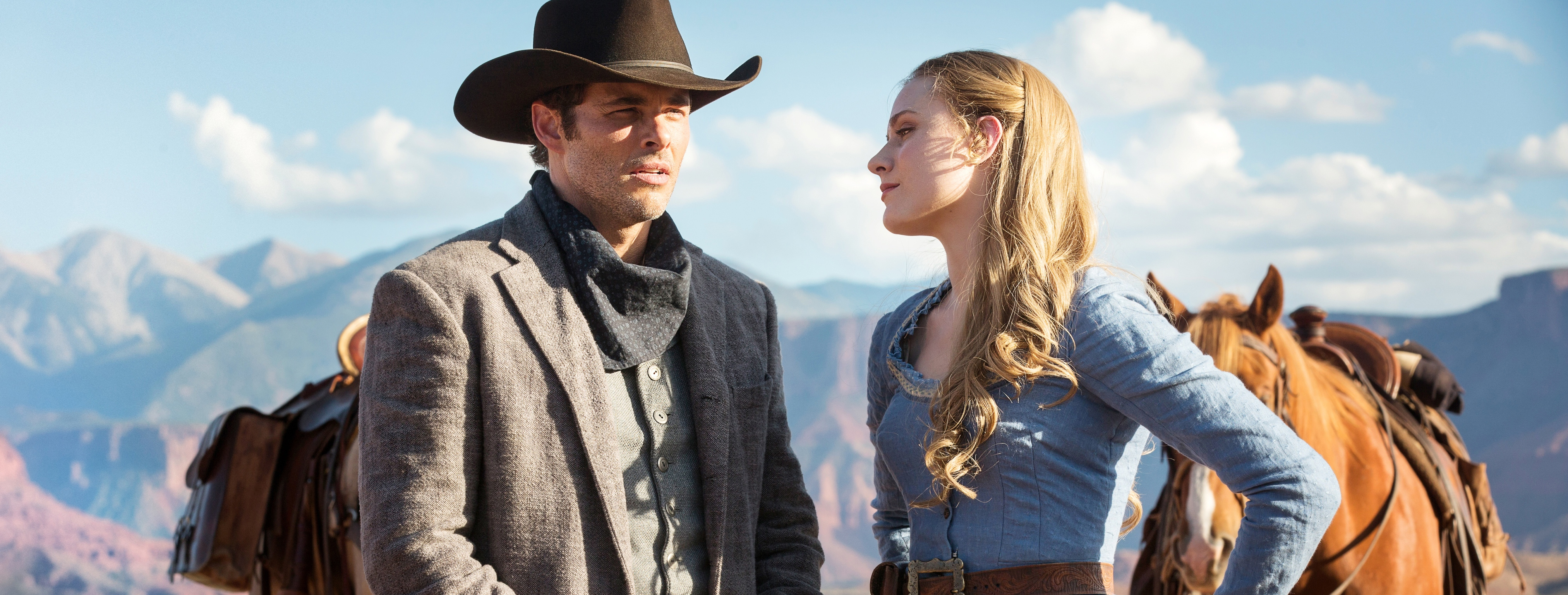
Westworld: A Sci-Fi Showdown
Paul Cameron, ASC sets the cinematic tone for this ambitious HBO series.
Unit photography by John P. Johnson
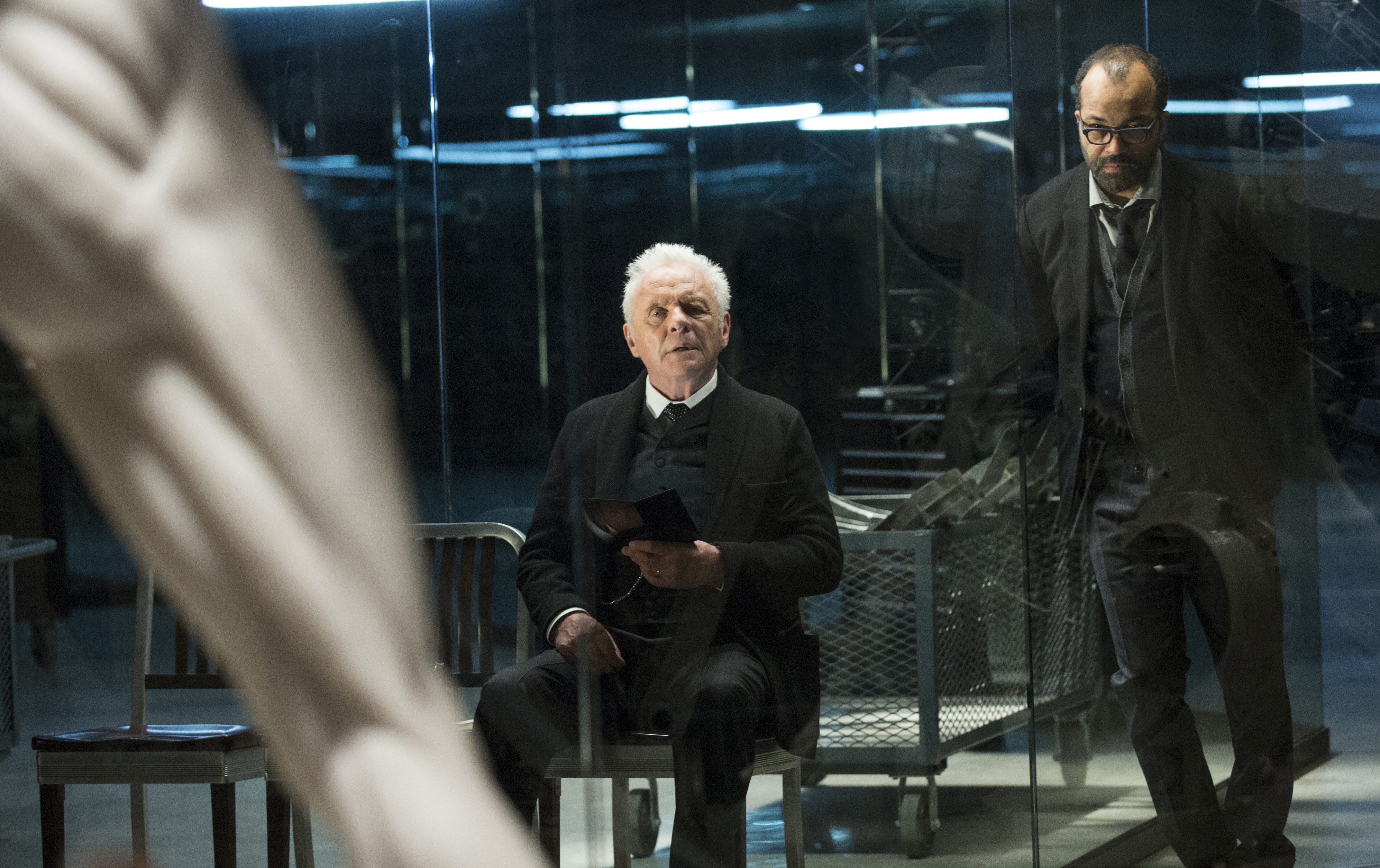
The ultimate in debauchery and adult entertainment: A completely immersive experience of living in the past and experiencing a world without consequences for actions. Dive into the Old West wearing a six-gun on your hip, and if you don’t like the look of the guy in the corner of the saloon, shoot him dead. He’s only a robot, after all. This is the ultimate playground and theme park for the supremely wealthy: Westworld. Based on the 1973 film written and directed by Michael Crichton, HBO’s new series delves deeper into this Disneyland-with-blood-and-sex world where the very rich can come to play.
Among the creative team bringing this series to HBO was executive producer and writer Jonathan Nolan, who also directed the pilot. Riding shotgun, behind the camera, was veteran cinematographer Paul Cameron, ASC, who brought to life the iconic imagery of Man on Fire, Collateral (AC, Aug. 2004), Deja Vu and the upcoming Pirates of the Caribbean: Dead Men Tell No Tales.
“Basically the structure of the series is very similar to the film,” Cameron asserts. “It’s a Western theme park and the robots, which are now called ‘hosts,’ populate the town and interact with the guests as they desire. We also get a lot more of the behind-the-scenes of the park in the diagnostic and manufacturing areas, and we get to see the inner workings, run by Anthony Hopkins’ and Jeffrey Wright’s characters.”
Although the Westworld series follows the same basic structure of the original film, it places the hosts and the people controlling them — the park administrators and programmers — in the starring roles instead of the guests, who constantly change. “One of the big things that we get a feel for is the cyclical nature of the park,” Cameron notes. “We see this in the pilot: The starting of the park every morning with the hosts in the same places going through the same paces — a repetitive Groundhog Day-like scenario with the same central characters. The same train pulls through every morning, the same Sheriff, the same saloon bartender and so forth — but we also get a feel for the slight changes, the darker side. We see Evan Rachael Wood’s character, who is a host, and she greets her father every morning. It’s repetitive, robotic. But one day she wakes up and the host who was the bartender is now her father. These are just robots, but we get to see that they’re more than that and not quite as expendable as they’re made out to be.”
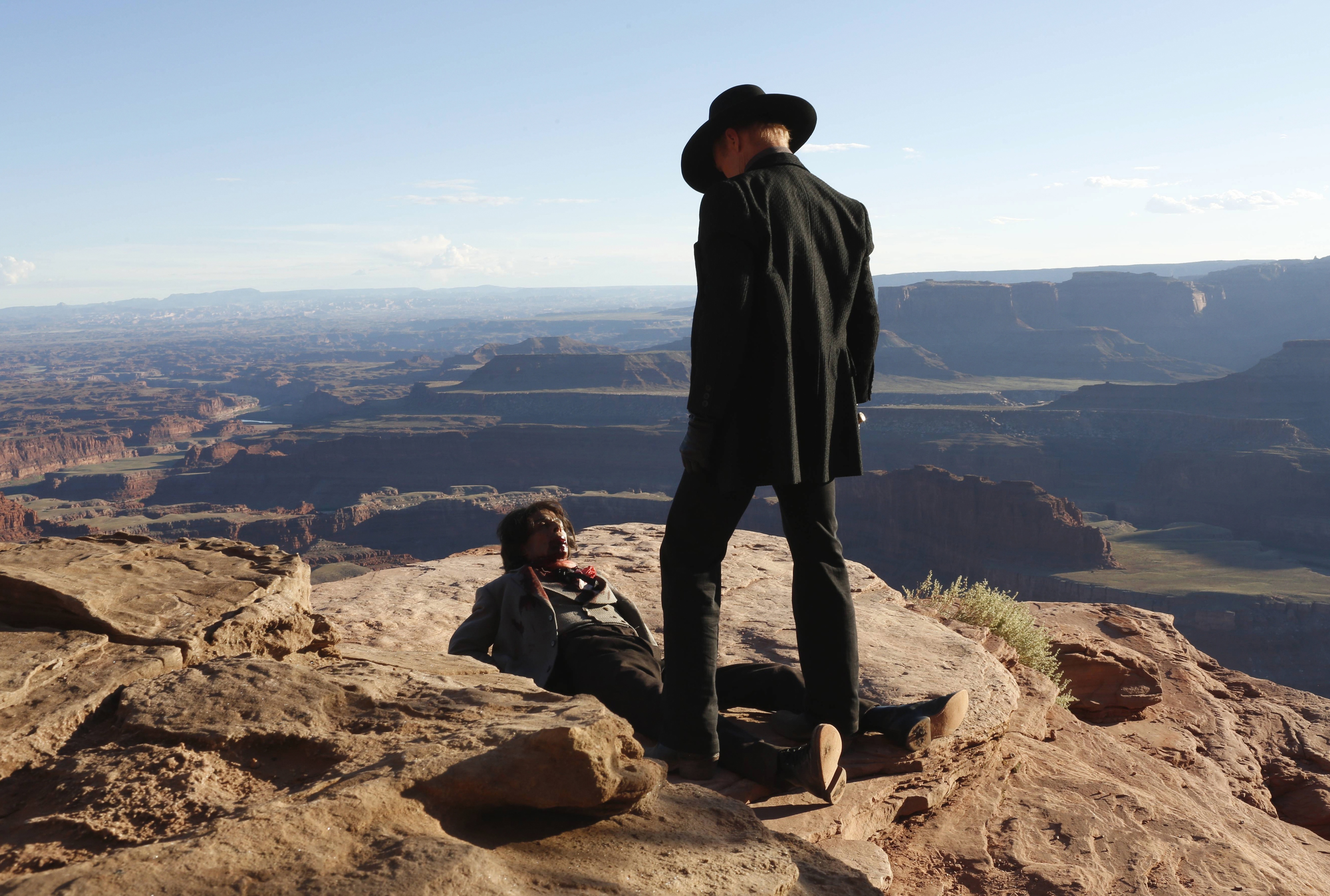
Westworld is set in a remote portion of Utah, where the park encompasses many square miles with the town at the center. The town set is housed in Santa Clarita, California, at Melody Ranch, an Old West town with a rich Hollywood history that includes HBO’s Deadwood, among other projects. The set was completely redesigned and rebuilt for the Westworld production, including a practical train station with a full-size practical locomotive that pulls into town with three carriages.
With the support of HBO and director Nolan, the decision was made to shoot Westworld on 35mm film. “Fortunately, in my very first conversation with Jonathan, I asked him if he had any interest in shooting film and he said they had already decided to do that,” Cameron recalls. “For me, it was fabulous to shoot film again; it was just a dream. “I used [Kodak Vision3 500T] 5219 for night exteriors and interiors, a little [Vision3 250D] 5207 for some dusk work.”
Lab service was provided by Fotokem in Burbank, Calif. For dailies, Cameron found an old film trailer that he outfitted with a 65-inch plasma display. Then, he, director Nolan and key crew would spend lunch every day watching dailies on location. “I still feel viewing dailies together is really the way to go,” he opines. “You take half your lunchtime, pop in there for half an hour and get instant feedback — it’s a very collaborative experience, just like the old days!”
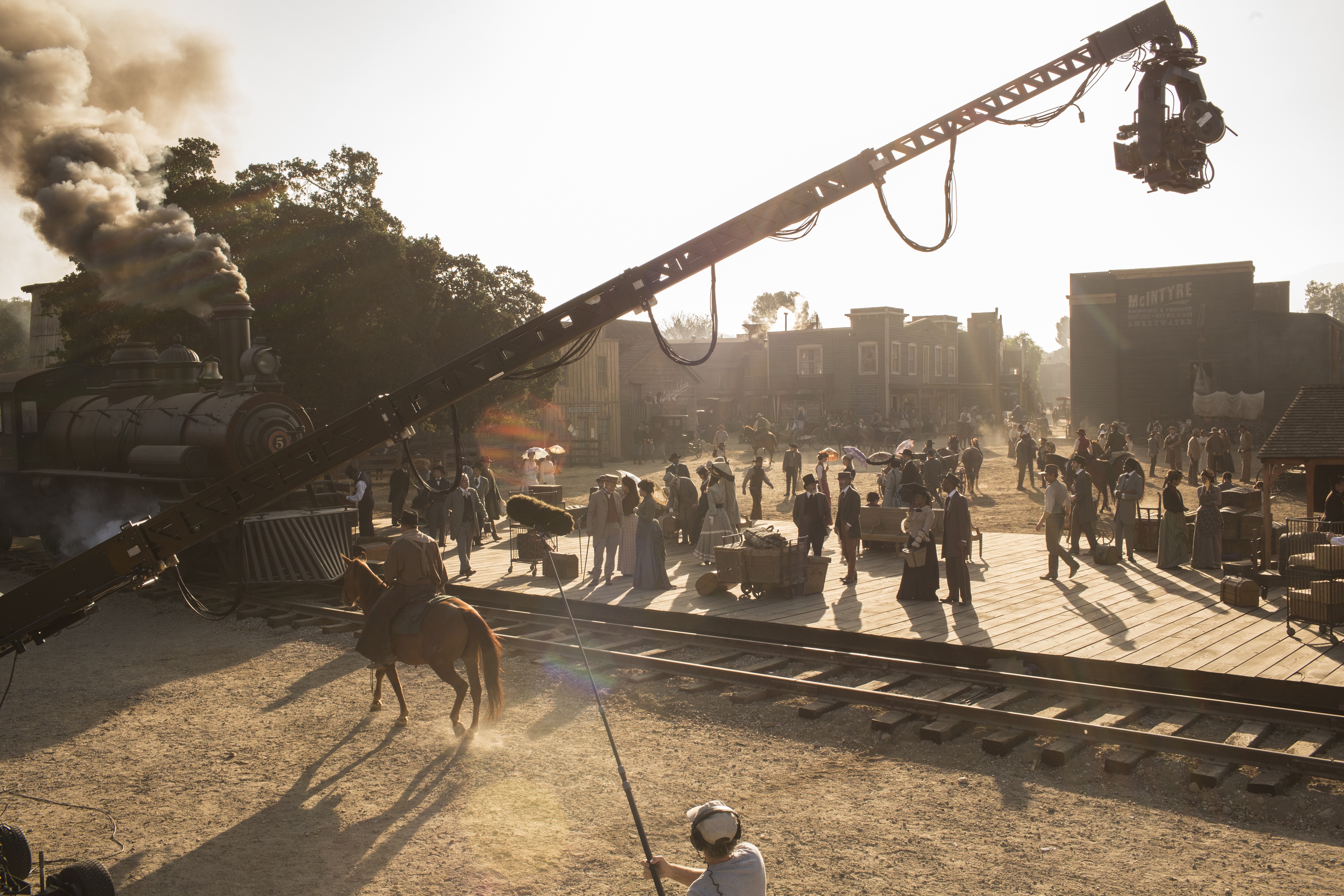
A key location in any Western is the town’s saloon and Westworld is no exception. “Melody Ranch, where we shot the main street set, has been there since 1920 and it’s pretty obvious that the town was laid out by a cinematographer,” Cameron offers. “The sun comes up on one end of the street and sets on the other.”
The interior of the saloon was shot inside the actual facade on the Western street so that transitions could be made moving through the saloon doors and then looking out onto the street. This meant that the outside world was natural, direct sunlight and the cinematographer had to balance interior exposure with the hot, natural sun. “The saloon is a beautiful design and was a pleasure to shoot in, but we shot most of the day interiors when the sun was straight overhead — the California summer sun pounding down on the light-colored dirt outside, which created a very heavy exposure,” Cameron notes. “Even with 50 ISO film and an ND 0.9, the exterior was still at a 5.6/8. That meant I had to balance the interior for that intensity. We couldn’t do a 5-stop iris pull every time a character went through the saloon doors so it required a radical amount of light in the set, but I did some tests to see what it would take to get the volume of light into the set and still maintain a quality and direction to the light, and it worked out quite well.”
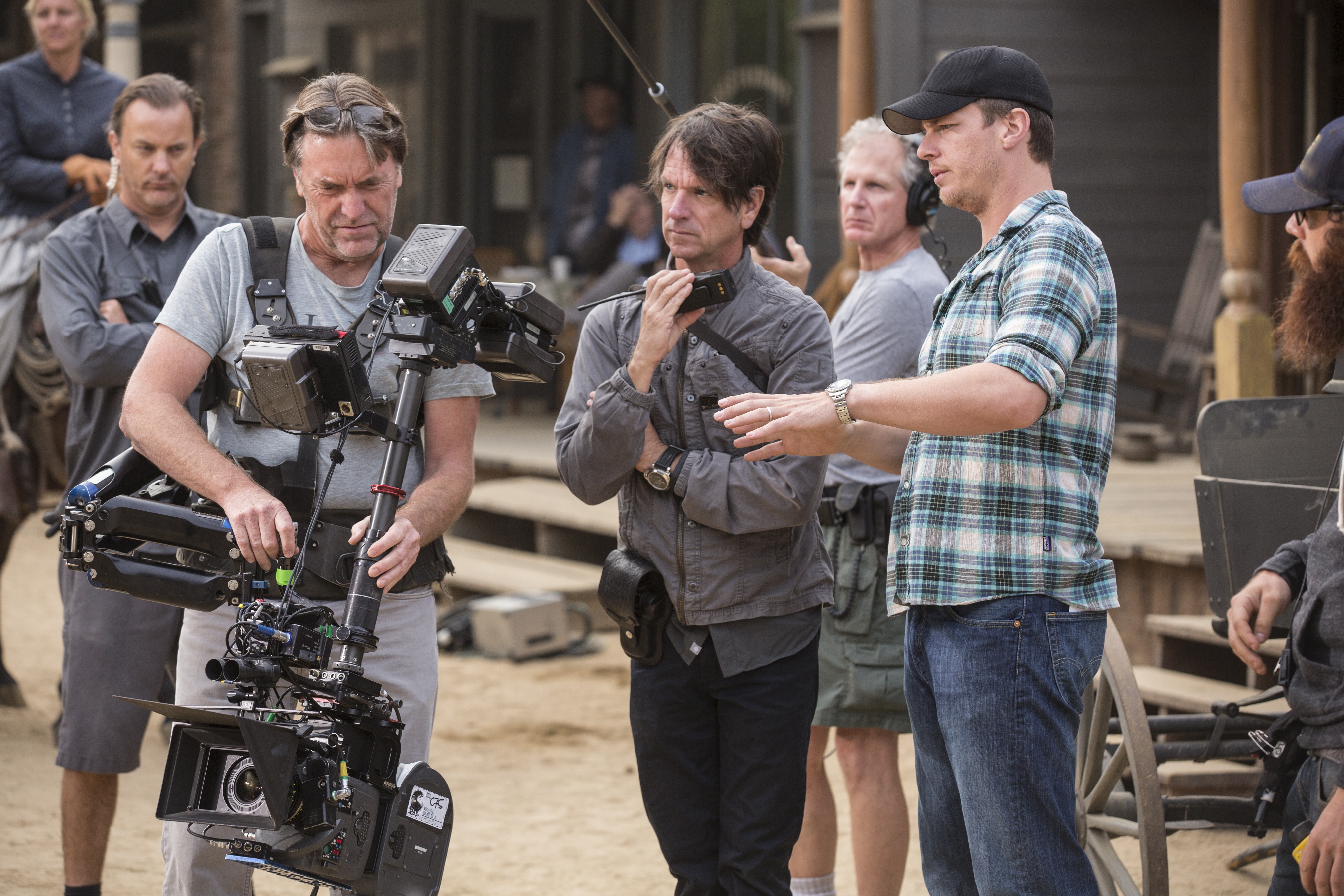
Cameron lined the ceiling of the saloon with a grid of Arri M40 4K HMIs with large bank Daylight Chimera softboxes. “I initially tested out just a big diffusion overhead, but it spread the light too much and it had no shape to it. We ended up putting four M40s on four sides of the truss boxing the set. Each was rigged to a bar that was on chain motors so that I could use them high or low. When high, I had the Chimeras on them and put each set of four through a bed sheet. When low, we would skin a 20x20 frame of muslin and drop that in just above the top frame line. It was soft, but still directional and it gave me the stop I needed. Then I could add a sider or a touch of fill from the floor to shape our close-ups.”
The cinematographer turned to Arriflex 435 and Arri Lite cameras along with a complement of lenses that included Cooke S4s, Canon K35s and Fujinon Premiere zooms — all provided by Keslow Camera.
“I used the Canon K35s for a number of flashbacks in the episode,” Cameron submits. “They’re actually a hybrid between dreams and flashbacks, and I really loved the K35s for those scenes because of the flare and halation. Most of the show was shot with the Cooke S4 primes and, occasionally, with some Fujinon Premiere zooms, which we used mostly on location in Moab, Utah, shooting exteriors. Cooke S4s are the most elegant lenses to photograph faces with. They render the subtleties of shape and color, in particular, really wonderfully. There is a slight softness and beauty to Cooke lenses that is unsurpassed. The Fujinon Premier zooms are a good fit with the Cookes.”
For other locations around town, the production shot on sets in Santa Clarita, but where exteriors were seen through windows or doors, the sets were moved and rebuilt in Moab, Utah, to get real vistas in the background. “We did a lot of interiors that way,” Cameron recalls. “We’d plan on shooting the reverse angles of interiors out in Moab, where the massive Red Rock sculptures were our backdrop, and they gave a kind of cinematic sensibility and feel.
“It’s just not the same to greenscreen it,” the cinematographer continues. “It doesn’t enable you to do things seamlessly, moving a character to a porch and rack focusing to the background. The greenscreen reality is never as seamless as that. It’s the quality of the light; it’s just real. We’re using the natural character of the lenses to rack focus, not creating those looks in the computer later — everything is practical. Everything was shot on film, and Jonathan and I wanted it all to be as real as possible. I’d much rather have the challenge of designing coverage to be shot at two different times in two massively different locations than to deal with plates and greenscreen and composites. Most of the time you don’t get to shoot the plates first so you’re guessing what the look will be and then trying to match that guess later on and it never quite works right. For me, this was a great approach.”
Cameron notes that there’s quite a bit of camera movement in the pilot episode, but there was a constraint that was imposed upon a lot of it. “We wanted things to feel a little mechanical,” he explains. “We wanted movement to feel like it was from the point of view of an observer watching over the action. This plays out in adjusting compositions on shots; there’s often a very definitive frame adjustment, like a shot that was moving and then found the subject it wanted. We were fortunate to have Chris Haarhoff as operator and Steadicam operator, and we would conceive of a lot of interesting shots with Technocrane and Steadicam. We had a lot of slow, creeping camera and tried to make all of the movement a little mechanical, like operating off of wheels, very deliberate to give a little reminder that someone is watching everything that happens.”
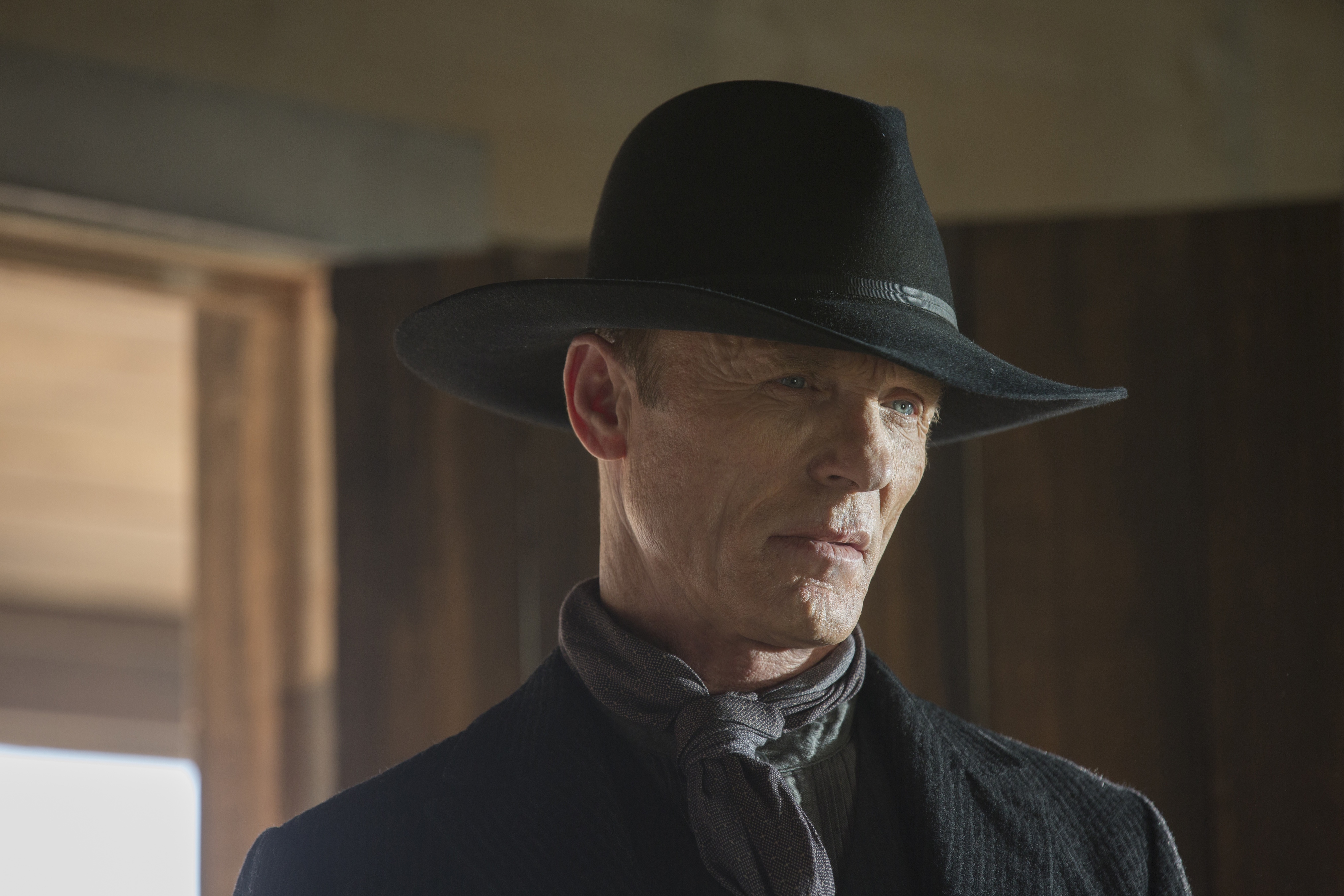
Indeed, in the depths of the park, someone is always watching. Away from the guests’ experience in the Wild Wild West is the park’s control center, a multilevel modern structure where the administrators watch what is happening and the hosts are fabricated, repaired and “retired.” Most of the behind-the-scenes were built on stage, but the large, low level of the facility where hosts are sent in “retirement” was shot at an abandoned shopping mall in Hawthorne, California.
Above that are maintenance rooms, all with slick, modern looks. “The diagnostic and manufacturing rooms are one set that would get redesigned and re-propped for various scenes,” Cameron offers. “One day it would be filled with dipping tanks and one day it would be dressed as behavioral rooms and another as diagnostic rooms or repair rooms where they bring the hosts that have been shot up by the guests. The challenge in all these rooms was that they were all glass walls, which was hell on reflections. Luckily, we had coffered ceilings where I could shoot a lot of sources through. Otherwise, we would see everything that was on the floor. I rigged 10-LRX 12K tungsten PARs on travelers to move up and down those sets and filled the overhead grid with MacTech LEDs for overall ambiance as needed. With the endless glass walls surrounding the sets, strong top source light was the way to go.
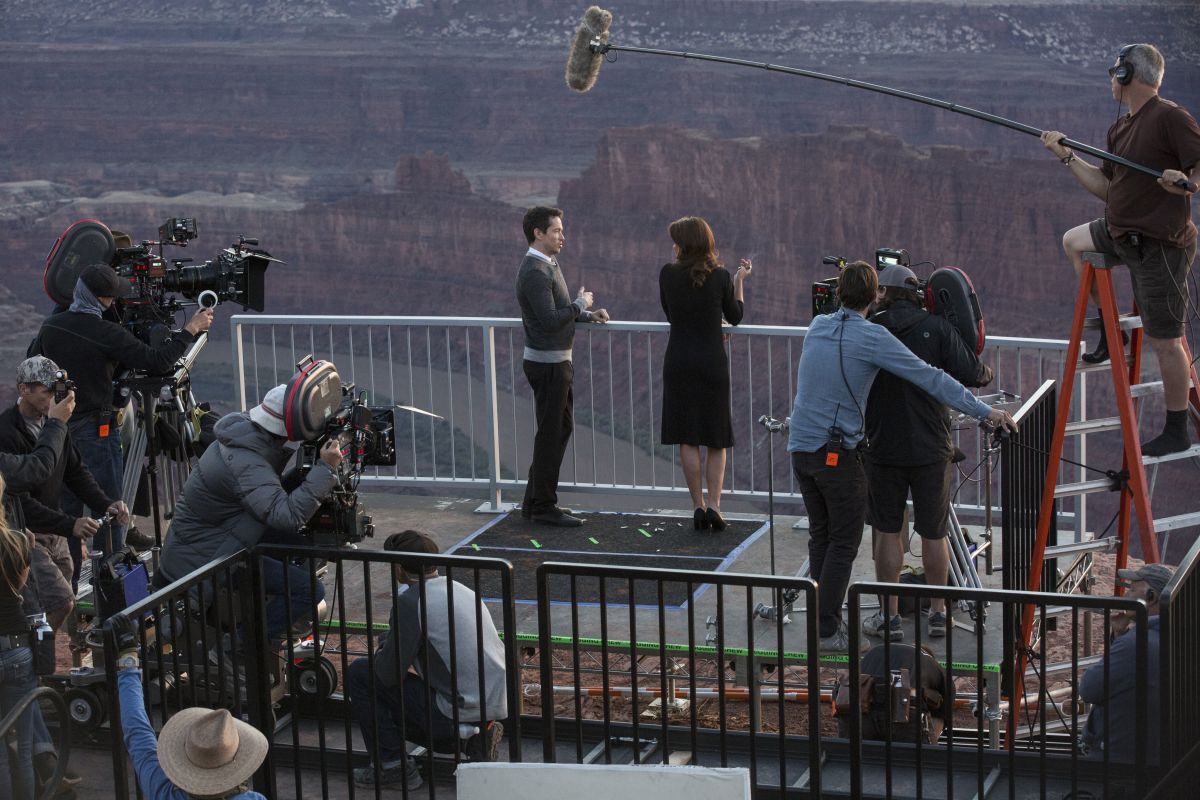
“One of the bigger sets was the control room,” the cinematographer continues. “It was a huge 50-foot diameter circular set wrapped in red Plexiglass with a 3D topographical map of the park in the center. We did that with a set of two 2K video projectors sending down a 3D photograph that can spin around and animate. By the nature of that, I had to keep any other lighting in the room below that level or I’d wash out the projection. My max stop was a T2.8. No light could touch the map whatsoever. The circular shape of the set and the reflective nature of the Plexiglass made it so that I couldn’t hide lights on the floor anywhere. The slightest camera movement and you’d immediately see the light. I ended up hanging these bad-boy, focusable, rock ’n’ roll lights above the set and utilized the small opening where the 3D projection was coming down to light the actors. I had three or four of those circular traveler tracks up there and I could slide around these rock ’n’ roll lights to hit the actors where we needed.”
When it comes to situations where the cinematographer can light from the floor, he offers that he is very particular about the types of diffusion he uses on his fixtures. “I have three types that I carry with me: Hampshire Frost, Opal and bed sheet. That’s it,” he offers. “There’s no need for anything else! I don’t use grid, I don’t use 216, or whatever, just, really, Opal and bed sheet. I got the bed sheet idea from working with Tony Scott — he loved it. You can travel anywhere in the world and if you need diffusion, just pull the sheet off your hotel bed and bring it to work. I love it. I like bed sheet at the edge of the frame — it has a very soft quality, lighter than muslin, but inexpensive and really easy.

“The biggest challenge on a show like this is to give it a big cinematic scale,” the cinematographer concludes. “There were day-to-day challenges, of course, like lighting the saloon, but everyone rose to the occasion and worked together to make this something special.”
Following the production of the Westworld pilot, series episodes were photographed by David Franco, Brendan Galvin, Jeffrey Jur, ASC and Robert McLachlan, ASC, CSC; with additional photography by M. David Mullen, ASC.
TECHNICAL SPECS
1.78:1
3-perf Super 35
Film Stocks: Kodak Vision3 5219 500T, Kodak Vision3 5207 250D
Cameras: Arricam Lite, Arriflex 435
Lenses: Cooke S4, Canon K35, Fujinon Premiere zoom






